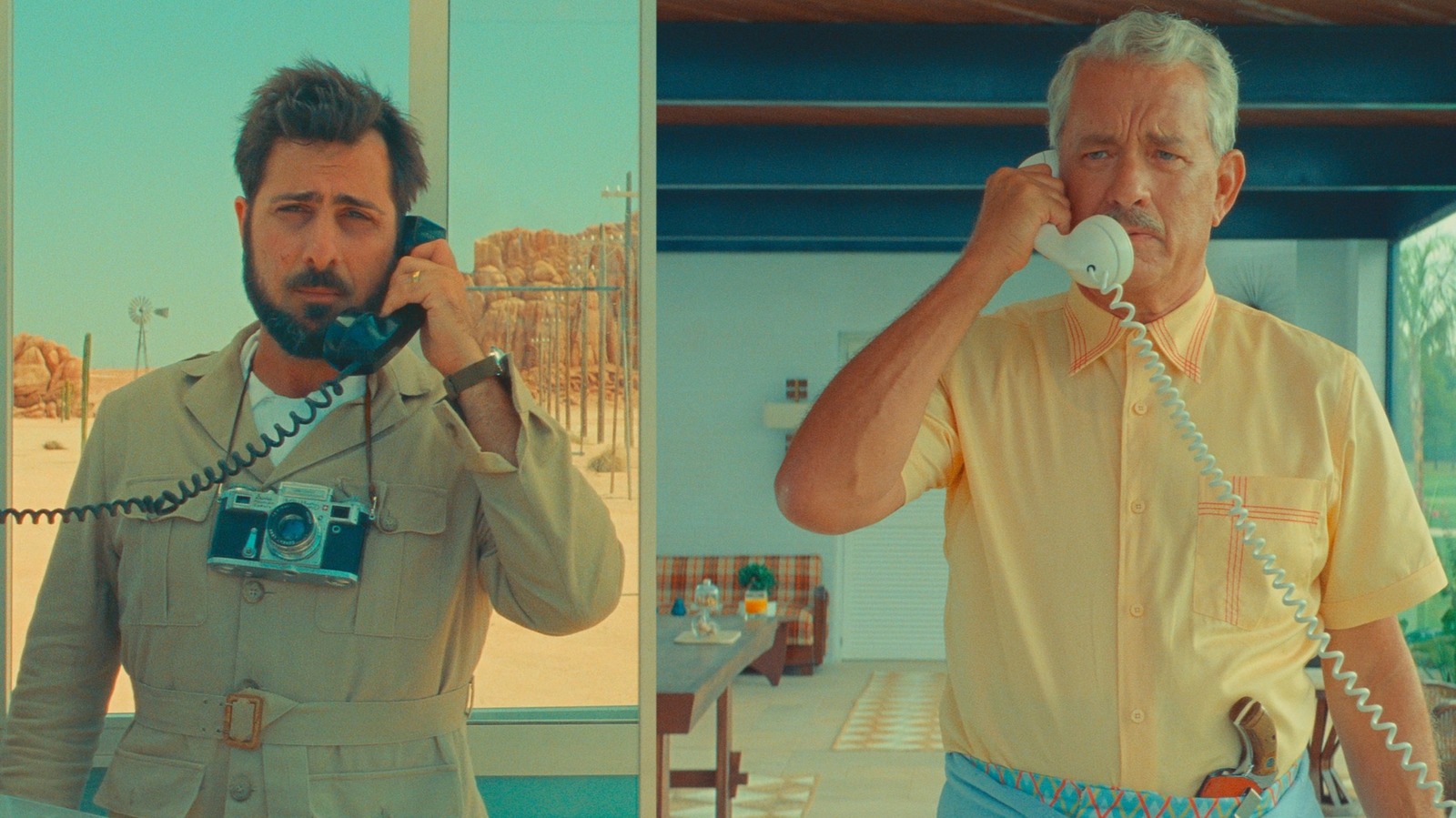
Wes Anderson’s Characters Are Inspired By Real People — Even The Really Weird Ones – /Film
Wes Anderson’s cinematic universe is filled to the brim with eccentric characters that seem almost other-worldly, so it might surprise his fans to learn that many of them are based on real-life people. Some of them are famous figures, while others are people that Anderson knew personally. The writer-director hasn’t revealed the inspiration for all of his creations, but he has let a few sources slip over the years. His most recent film and the biggest release of his career, “Asteroid City,” is no exception.
“Naturalistic” might be the last word that someone would use to describe any piece of Anderson’s surrealist filmography. The visually-focused filmmaker prefers stylistic Brechtian compositions and expository, almost scientific dialogue to gritty camera movement or melodramatic conversation. This is why he prefers to create worlds unto themselves for the settings of his films, such as the fictional city of Ennui in “The French Dispatch” or the titular “Asteroid City.”
“In a way, it’s just about making a space to work in,” Anderson explained to Collider. “The real answer is just because I like to. On the one hand, usually the characters I’m writing are inspired, in one way or another, by people in real life, and doing something that relates to my own experience and my own interest,” he said. “Nevertheless, I feel like the dialogue and the writing ends up being not entirely naturalistic, not by my choice particularly. Somehow, I feel like it needs its own world to exist in.”
Scarlett Johansson’s character in Asteroid City had an unexpected source
 Focus Features
Focus Features
Scarlett Johansson’s character in “Asteroid City” is among those that were directly influenced by a real-life person. In this case, Johansson cited Bette Davis as the blueprint for her role. “She’s formidable and vulnerable at the same time and just really captivating. Bette Davis’ whole career, the span of it, was something I could hang my hat on,” the actress revealed to Entertainment Weekly. “I’m not playing Bette Davis, but it helped give an idea of what this person’s career is and what it was like to be a woman in those circumstances then.”
While it’s unclear whether Anderson referenced Davis while writing the character, the “All About Eve” star’s legacy definitely shines through in her on-screen depiction as a formidable presence at the peak of an illustrious career.
Other beloved films of Anderson’s have also drawn from notable public figures. For instance, his frequent collaborator Bill Murray stars in “The Royal Tenenbaums” as Raleigh St. Clair, a cuckold scientist that specializes in such hidden ailments as “amnesia, dyslexia, and color-blindness, with a highly acute sense of hearing.” Raleigh St. Clair is widely thought to be based on the famed neurologist Oliver Sacks, best known for his idiosyncratic studies of rare disorders like visual agnosia, an inability to recognize and properly label objects by sight despite a lack of visual impairment.
The characters in The French Dispatch are based on real-life writers
 Searchlight Pictures
Searchlight Pictures
Murray also appears in Anderson’s 2021 film “The French Dispatch” as the editor-in-chief of the titular publication. The director has conceded that almost every character in the film is based on former staff writers of The New Yorker, which he has long been obsessed with. Anderson even tried purchasing the magazine’s archive in full back in 2003, per The New Yorker. Murray’s character Arthur Howitzer is a combination of two former high-powered bosses at the real-life magazine, Harold Ross and William Shawn.
“Bill Murray’s character has a bit of the surface of Ross and more of the feeling of Shawn, which is really that he’s so deeply protective of these writers,” the filmmaker added. In the film’s first tableau, Howitzer suggests that his local color reporter sprinkle a flower shop or two among his reports of rats and sex workers, mirroring a suggestion that Ross once made to writer Lois Long — “New York isn’t quite as bad as Sodom and Gomorrah and if it is we better keep it quiet,” the editor advised.
The local color section of The French Dispatch is written by Herbsaint Sazerac, played by early Anderson alumni Owen Wilson and inspired by the late journalist Joseph Mitchell. Like Sazerac, Mitchell focused on the seedier parts of the city to tell its story. “He wrote about the rats of New York, and people’s tales about rats, and where you find them, and how they move, and their habits,” Anderson explained. “And it’s a story about the city, not about wildlife particularly.”
Even the narrator is a nod to a real New Yorker contributor or two
 Searchlight Pictures
Searchlight Pictures
The magazine’s writers and their work were essential to every part of “The French Dispatch.” Frances McDormand’s character covers a youth uprising in the spirit of Mavis Gallant, who covered the Paris student protests in 1968. Anderson even admitted to ripping some of her words directly off the page for the film.
The film’s final tableau follows Roebuck Wright, a writer for the taste and smell section that draws from the writing and personas of James Baldwin and A. J. Liebling. Baldwin is a well-known political journalist and novelist, while Liebling’s work is not as widely remembered. His work spanned a multitude of topics, much like Roebuck’s, but Anderson preferred his writing on that most universal art form, food.
He’s “one of my all-time favorite New Yorker writers,” the acclaimed filmmaker added. “Everything we do in the film where we’re describing different dishes — that all comes from him. He’s like [novelist P.G.] Wodehouse with his metaphors for different plates of food. He sometimes describes servings by their area or volume — like the acreage of a thin steak.”
But it wasn’t just the on-screen characters in the 2021 film that found their sources outside of Anderson’s cinematic universe. The film is also narrated by Anjelica Huston in an apparent nod to notable New Yorker contributors like Katharine S. White and Dorothy Parker, whose voices made the magazine the global force that it is today.
By grounding his unreal worlds in truth, Anderson manages to create quirky characters that are larger than life — but just the right size for his films.




























































